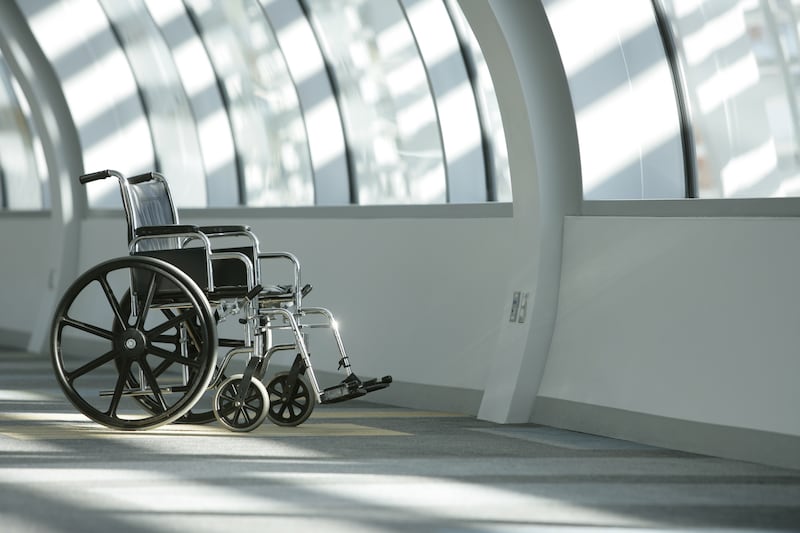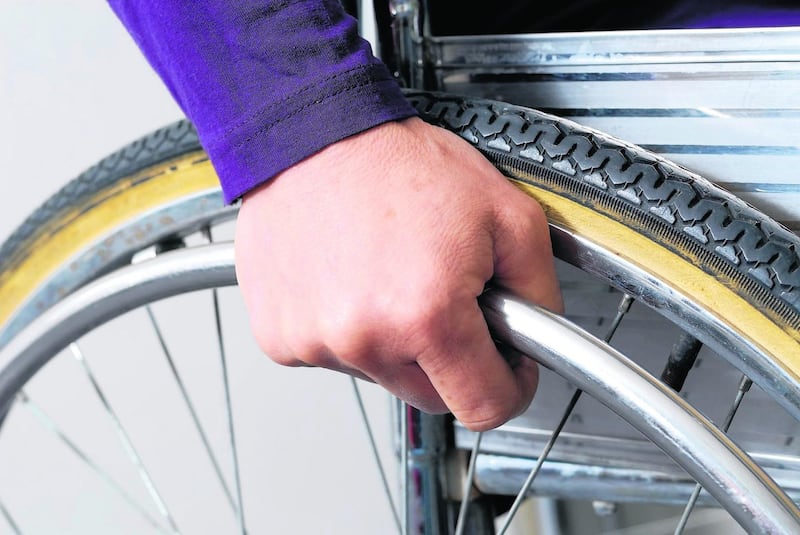When the DePuy scandal broke eight years ago, affecting more than 3,000 Irish patients, the urgent need for an orthopaedic register to better respond to serious patient events became glaringly apparent.
In 2010, DePuy announced a recall of its metal on metal (MoM) DePuy ASR™ XL acetabular system and DePuy ASR™ hip resurfacing system due to high failure rates.
The recall was carried out because an unusually high proportion of patients – up to 13 per cent – with these implants required revision surgery.
Particles from the chrome cobalt metal alloy in the devices broke down and caused tissue around the implant to rot and die, causing significant pain for patients.
In Ireland, 3,311 patients were registered as part of the DePuy recall process in public and private hospitals.
The situation drew attention to the use of MoM hip devices internationally and their manufacture and use has since waned considerably.

MoM hips are no longer used in Ireland but about 8,000 public patients here are believed to have one.
Much of the reliable data on hip failure rates and concerns regarding the performance of MoM hip implants have been highlighted by joint registers, underlining their significance in protecting patients.
The National Joint Registry (NJR) for England, Wales, Northern Ireland and the Isle of Man has been in place for more than 15 years while Ireland’s joint registry is only getting off the ground.
MoM hip implants
Ireland remains heavily reliant on UK guidance in the absence of a national orthopaedic register when it comes to our response to MoM hip implants.
This was evident last year when the UK’s Medicines and Healthcare Products Regulatory Agency (MHRA) issued an updated safety alert regarding specific instructions for doctors for follow-up of patients with MoM hip implants.
The agency has an expert advisory group that monitors the “performance of MoM hip joint articulations for the occurrence of soft tissue reaction associated with these devices”.
The HSE reissued the UK safety alert to all hospitals nationally, public and private, at the time.
In a statement, the HSE said it “continues to monitor patients in line with appropriate guidance and any patient experiencing symptoms should contact their GP for appropriate referral to hospital”.
Prof John O'Byrne of the Irish Institute of Trauma and Orthopaedic Surgery (IITOS) said the institute had urged that all MoM hip patients undergo tests and be followed up.
“The IITOS has been in regular communication with the HSE urging formal inclusion and follow up of all patients with these implants. Currently all metal on metal patients are followed as per current guidelines,” he said.
Risks
The Irish National Orthopaedic Register aims to help identify risks associated with joint replacement surgery. The electronic system will record and monitor elective athroplasty surgeries nationally by capturing device and other important details live in theatre.
It will rely on patient scoring systems, adverse incident recording systems and surgical revision rates to monitor performance and patient outcomes, according to the National Office of Clinical Audit.
Annual reports will be produced and patient outcomes examined on all joint surgeries nationally, providing a clear picture on the performance of hip devices.
Many elderly victims, some of whom have been left crippled, still have MoM hips inserted and continue to seek compensation
But a future full of promise is too late for many patients who received a recalled DePuy hip or another faulty MoM hip.
Based on recall records categorised as orthopaedic implants, the Health Products Regulatory Authority has identified 13 product removals involving hip implants between 2015 and 2017 alone.
Several hip manufacturers have also issued safety alerts and field safety corrective actions, which are taken by manufacturers to reduce a risk of death or serious deterioration in the state of health associated with the use of a medical device.
Six recalls
Hip device manufacturer Smith & Nephew, for example, has made six product recalls in Ireland and five field safety corrective actions since 2005.
Concern remains as many elderly victims, some of whom have been left crippled, still have MoM hips inserted and continue to seek compensation.
Several hundred cases have been issued in the High Court regarding defective DePuy implants and while many cases have been settled, some are still being pursued in the courts.
A periodic report from legal firm McCann Fitzgerald on the DePuy litigation alternative dispute resolution (ADR) process from April shows that to date, 1,102 High Court proceedings have been served on DePuy, of which 500 have been resolved and a further 126 are in the resolution process.

Three are listed for trial this year and a further 255 cases involving revised plaintiffs have not been resolved. Some 218 plaintiffs have not undergone any revision surgery, the report adds.
Information on the exact number of cases before the courts in relation to claims against other hip manufacturers is much more difficult to ascertain.
A search of some of the leading hip device manufacturers who have defended cases before the High Court since 2010 reveals a figure of about 100, both historic and current.
Court cases
David Taylor, professor of mechanical engineering at Trinity College Dublin, has provided evidence at court cases relating to MoM hip devices, with the majority of cases concerning the recalled DePuy ASR.
Only 10 per cent of the cases he has worked on included other MoM hips.
“It seems that the numbers going through the courts are small compared to the DePuy ASR. This may be partly because patients and their solicitors could be unaware that the same problems exist in these other designs. It might not occur to them that an engineering report on the metal parts themselves could be of value to their case,” he said.
According to information obtained via Freedom of Information, barrister Sarah Reid wrote to Minister for Health Simon Harris in May 2016 highlighting that victims “have settled cases at much lower value than they are worth”.
According to the HSE, at least 4,500 hip replacements are carried out in Ireland every year, usually on adults over 65
In the letter, Ms Reid noted that a recent ruling in a DePuy hip case, requiring all plaintiffs to set out the precise, technical defect in their device, would mean elderly victims having to spend thousands of euro on expert reports.
“As most of these cases involve a small plaintiff against a massive corporate defendant, the inequality of bargaining power – or in this case deep pockets – will mean that many plaintiffs will simply not be able to pursue their claims because of this ruling,” the letter states.
Expert group
She called on Mr Harris to establish an expert group made up of the Department of Health and HPRA “to examine some of these implants to determine the potential defects that existed in the implants, the defects in the manufacturing process if same occurred, and wider issues of histology and risk of pathological injury that may arise from the leaking of metal pieces into the bloodstream and surrounding tissue from the implants”.
No such group was ever established, she says.
What is a hip replacement?
A hip replacement is a surgical procedure to replace a hip joint with an artificial one. According to the HSE, it “provides a long-term solution for worn or damaged hip joints caused by injury or disease, such as osteoarthritis, which can cause severe pain and loss of mobility”. The hip joint is a ball and socket joint. The operation replaces both the natural socket and the rounded ball at the top of the thigh bone with artificial parts. These parts replicate the natural motion of the joint hip.
According to the HSE, at least 4,500 hip replacements are carried out in Ireland every year, usually on adults aged over 65.
Women are more likely to need a hip replacement than men.
Hip replacements are considered routine operations where the outlook is considered to be good.
Hip replacements can offer an end to joint pain, increased mobility and a better quality of life.
Hip replacements currently last about 20-30 years.









